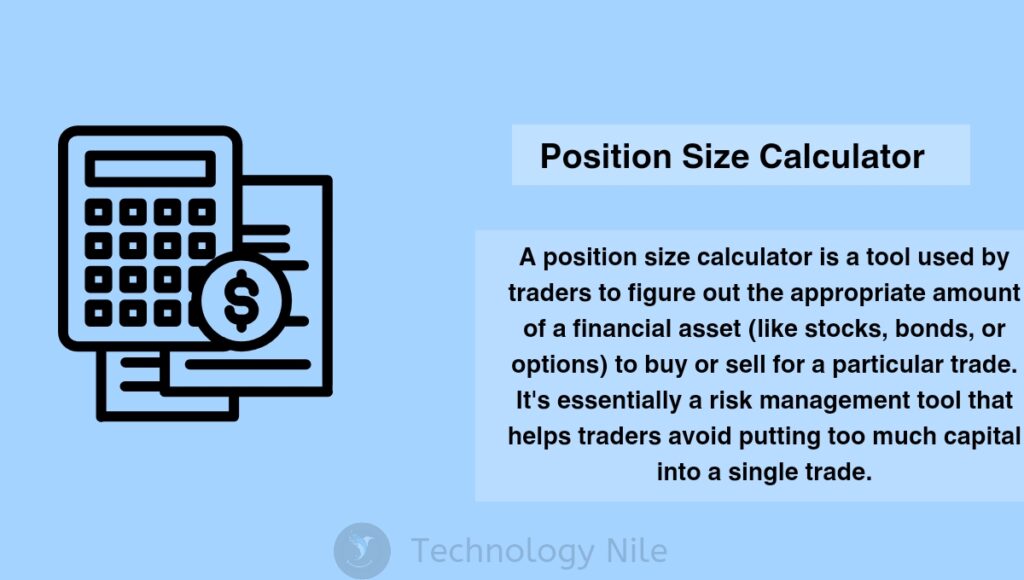Position Size Calculator

What is Position size calculator?
A position size calculator is a tool used by traders, especially forex traders, to determine the appropriate amount to buy or sell for a particular trade. It helps with risk management by ensuring you don’t risk too much capital on any single trade.
Account balance: Account balance refers to the total amount of money you have available for trading in your trading account.
Risk Percentage : This refers to the maximum amount of capital you’re willing to lose on a single trade, expressed as a percentage of your total trading account.
Stop – loss distance : This price represents the point at which you automatically exit the trade if the price moves against you.
Volatility measure : volatility measures to help you manage risk effectively.
- ATR : Average True Range (ATR): This indicator reflects the average price fluctuation of an asset over a chosen period. By factoring ATR into your position size calculation, you can allocate more capital to trades in less volatile assets and vice versa. This helps maintain a consistent level of risk across your portfolio, regardless of the specific asset’s price.
- Standard deviation : This statistical measure captures the dispersion of data points around the average price. In position sizing, standard deviation indicates how much an asset’s price tends to deviate from its historical average. Similar to ATR, a higher standard deviation suggests a more volatile asset, warranting a smaller position size to maintain your desired risk level.
- Both ATR and standard deviation provide a quantitative measure of an asset’s price volatility.
Account leverage: Leverage allows you to control a larger position size than your actual account balance would normally permit. For example, with 50:1 leverage, a $1,000 deposit lets you control a position worth $50,000. , with 10:1 leverage, a $100 deposit would allow you to control a position worth $1,000.
How it works?
Risk Tolerance: You input your total account value and the maximum percentage of that amount you’re willing to risk on a single trade.
Stop-loss distance: This shows the distance (in percentage or price units) from your entry price where the stop-loss order will be placed.
Calculation: The calculator then figures out how many shares or units of the asset you can buy while staying within your risk tolerance.
By using a position size calculator, you can ensure your trade size is aligned with your risk tolerance and helps protect your overall account balance from excessive losses.